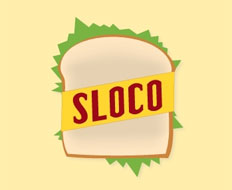I consider myself a grizzled, old, cynical foodservice veteran.
After two decades in the industry, growing up in one of the nation’s top food cities, and eating hundreds of items from dozens of concepts each year, it is very hard to impress me. For this reason, I have never written an entire column on a single concept or operator.
Like most industries, ours is one of incremental and evolutionary changes. Of course, there are notable exceptions such as McDonald’s and the explosion of fast causals like Panera. While these companies get considerable press because of their size and financial success, they started as the dreams of passionate leaders who saw what the future could be and were determined to make it happen.
Over the last few years we have also witnessed a consumer evolution in terms of diners’ growing interest in sustainability and local foods. To me, many experts in the field have come across as sanctimonious food snobs trying to force-feed me their hyped up maxims. In addition, they lack an understanding of the economics of our business or an idea of how things work at fast casuals that feed hundreds instead of dozens of people each day.
Quite honestly, it is much easier for those people to point fingers and whine than it is for them to do. Don’t get me wrong; I share the locavores’ emphasis on flavor and food quality. The operators I respect the most have always placed food over quantity or simply selling franchises.
When I first walked into the door at Chef Jeremy Barlow’s new sandwich shop Sloco, however, my eyes were opened as to how the sustainability movement could work in a fast casual setting. The local food movement has many thousands of leaders and proponents, but Chef Barlow is an eloquent and passionate leader who could take things to the next level much like Ray Kroc, Fred DeLuca, or Ron Shaich did.
Chef Barlow, a graduate of Vanderbilt and the Culinary Institute of America, has seemingly thought of every detail on how to run a green restaurant that serves great food quickly. His locally sourced ingredients stand out more than those used in sandwiches at many national chains (Yep, I did some comparison tastings).
Barlow even designed his store to have a 600-square-foot footprint. This may not give my restaurant designer friends much to work with, but the chef does a great job of telling Sloco’s story on the walls. Of course, this is also favorable for unit economics and scalability.
Sloco even lists the number of miles a sandwich’s ingredients have traveled the way other restaurants list price or calorie counts. One favorite of mine is the Cordon Bleu sandwich with smoked chicken leg, bacon, blue cheese, tomato, greens, and mayo, which logs 154 miles.
But that’s enough from me. The concept is best described by Chef Barlow himself.
"Sloco is … a made up word,” he says. “In the beginning it did not mean anything, but it has grown into a concept: making affordable sandwiches with real food, and the potential to bring this food to lots of people. It is also about the opportunity to mimic the success of the fast food industry, the industry that changed our food system, with new a ‘food fast’ system.”
He goes on to explain to me that Sloco mimics the traditional fast food model by serving food quickly and affordably. “We can mimic that model, substituting real food in place of industrial foodstuff,” he says. “As we expand, a natural infrastructure of sustainable food will build itself. The supply and demand will increase together, and a true sustainable regional food system can rise again."
Some restaurant friends of mine think the whole local thing is just a fad, but to me it appears to be an organic (no pun intended) movement with greater and longer lasting legs than anything else I see in society.
Industrial farming and food processing is simply too damaging to the environment and the quality of our food and health. While I am no granola-chewing hippie and wouldn’t eat a piece of tofu if my life depended on it, there are responsible ways of doing things that we must, as an industry, push for.
Fifty years ago, the U.S. was a nation passionate about tobacco, with even medical doctors smoking. In the last 10 years, I have met thousands in the medical field and have never seen one of them smoke. Big Tobacco has shrunk as the medical industry and kids (via teachers and schools) have pushed for changes in society.
These groups have their sights trained on foodservice. Unlike the tobacco industry, which was stuck with a flawed product, we can (and must) change the way we get our food to continue to grow as an industry. Our suppliers will adapt as we work with them for the good of all.
Barlow’s new book Chef’s Can Save the World is both an impassioned summary of the green movement as a whole and a guide for what chefs can do to make a difference. Imagine the difference one purchaser who controls supplies for hundreds of restaurants can make.
He refutes one by one the major arguments against local sourcing (food cost, difficulties in supply, etc.) that I made in the past, and presents a road map for moving forward.
I have bought several copies of this book to give away. E-mail me at George@QSRmagazine.com to enter into a drawing to win one.







